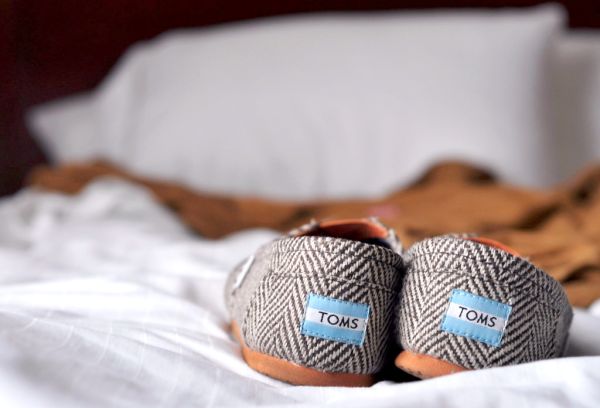
While social media has changed the world, the Millennials are the early adopters who vetted new platforms as they emerged. Social media has defined Millennials as much as they’ve influenced the evolution of social media.
Of course, social media isn't solely for Millennials. Gen Z, the post-Millennial generation, has already started to use social media in their own unique way. Gen-Xers and Baby Boomers have adopted social in their own ways, too.
In fact, of all the spaces where the term “Millennial” tends to refer more to a particular set of behaviors rather than simply an age bracket, it’s social media.
Your choice of social channels matters
As we’ve been discussing, Millennial social use is a reflection of the fear of missing out and experience-sharing lifestyle.
When Millennials interact with brands, they look for the experience. The experience can be related to the craft aspect of the brand (the human interactions or the beauty of the product), or it can relate to the quirk aspect (the nostalgia or local community connection), or even the pluck of the brand (the audacity to take on the world or champion a cause).
FACT: One-third (33 percent) of Millennials identify social media as one of their preferred channels for communicating with businesses. Less than 5 percent of those 55 and older agree.
It’s important to keep in mind where Millennials hang out and how they use social. We think of Millennials as simply flocking to the latest and greatest social media platform. After all, they are the ones who popularized the phrase, “I was doing X before it was cool.” And it’s true that in some cases, as Gen Xers and older Millennials caught on to popular platforms, like Facebook, some Millennials moved on because “My parents are on here.” Heck, they’ve already begun to complain about SnapChat for the same reason.
But that’s not the whole story. Yes, Millennials tend to follow trends, but that doesn’t mean that they’ve all abandoned older social media platforms. As SocialMediaToday points out, it’s more complicated than you’d think.
Right now, SnapChat is the boisterous newbie in the social media space, but Instagram, which has been around for years, remains popular among Millennials. In fact, it has continued to compete strongly with SnapChat for Millennials’ attention with the addition of their own version of stories and live broadcasting.

Sure, we generally think of them as young and free, but the truth is, a large percentage of Millennials are in their thirties. As Millennials age, they’ll more readily settle on social platforms that they’ve been using and less likely to move on. Look, 41 percent of Millennials are still on Facebook. So yes, you can count on Millennials being very interested in the next social fad, but you can also count on reaching Millennials in platforms that have been around for awhile, too.
All this should come as good news for you. It means you can pair where your brand naturally hangs out with your interest in connecting with Millennials.
When developing your social media strategy for reaching Millennials, keep in mind the purpose of the platform and the way it’s used. This may sound obvious, but your interactions should follow community standards, especially as Millennials are using it. For example, the Instagram community responds to photos that are well rendered and original. Many brands bumble their way through Instagram by making the mistake of sharing stock content or resharing the same images over and over again. You can’t build an engaged audience that way.

For every social platform, you must first understand how the platform works, then consider how you could use it. Brands that churn out new, interesting, meaningful content on a regular basis are the ones killing it.

Relate to people
Brandon at Sand Cloud agrees that the key to social media—and in fact all aspects of marketing to Millennials—is authenticity.
OK, so “authenticity” has definitely achieved buzzword status, but the essence of the concept remains important: Your brand must have a genuine, approachable personality that shines through all your interactions. See, Millennials have what has popularly been called a “B.S. meter” when it comes to digital marketing tactics. Chris Woodard, a Millennial, describes it best:
“We’ve been bombarded our whole lives by the same standards of advertising and can smell a sales pitch from a mile away. We’re being sold something every step of the way: before we can watch a YouTube video, before we can watch a TV episode on Hulu (I’m still too stubborn to pay the extra couple bucks a month on Hulu for no commercials), before we can even finish scrolling our Facebook news feed.”
The Millennial “B.S. meter” can identify a sales effort a mile away, and if it’s not welcome, they tune it out. They don’t respond to digital marketing like that. Instead, they prefer to relate to brands and buy when they’re ready. This means that brands must remember that they are interacting with a social network rather than a whole lot of prospects.
To do it right, every interaction should feel natural to your audience. Brandon defined the authenticity of the Sand Cloud brand in this way: “We don’t try to be cool; we just try to relate to people.” This is what social is all about. You can be cool, just don’t spend your efforts trying to be cool. That’s inauthentic. Instead, spend your efforts relating to your audience. Your followers will totally think that’s cool...and authentic.
Some practical tips on relating to your audience:
- Identify why your clients would want to relate to you.
- Your cause is a powerful connection that enables you to have a multidimensional conversation with your audience.
- Remember that they’re interested in the human element of your small business. Video with the real people behind the scenes will make your business come alive to your audience.
- Creating and sharing your own original content feels way more authentic than barraging your audience with recycled memes and quotable quotes. (Yes, people do respond to these, but in moderation. Sprinkle them into your mix rather than making them your mainstay.)
- Great example from Sand Cloud: they know that their followers care about saving beaches, so they may walk along the beach, see a piece of trash, and take a quick snap of them picking it up and saying something like, “Change happens one moment at a time.”
Try free
14-day free trial. No credit card required.















Chapter 5 :
Social media behavior
While social media has changed the world, the Millennials are the early adopters who vetted new platforms as they emerged. Social media has defined Millennials as much as they’ve influenced the evolution of social media.
Of course, social media isn't solely for Millennials. Gen Z, the post-Millennial generation, has already started to use social media in their own unique way. Gen-Xers and Baby Boomers have adopted social in their own ways, too.
In fact, of all the spaces where the term “Millennial” tends to refer more to a particular set of behaviors rather than simply an age bracket, it’s social media.
Your choice of social channels matters
As we’ve been discussing, Millennial social use is a reflection of the fear of missing out and experience-sharing lifestyle.
When Millennials interact with brands, they look for the experience. The experience can be related to the craft aspect of the brand (the human interactions or the beauty of the product), or it can relate to the quirk aspect (the nostalgia or local community connection), or even the pluck of the brand (the audacity to take on the world or champion a cause).
It’s important to keep in mind where Millennials hang out and how they use social. We think of Millennials as simply flocking to the latest and greatest social media platform. After all, they are the ones who popularized the phrase, “I was doing X before it was cool.” And it’s true that in some cases, as Gen Xers and older Millennials caught on to popular platforms, like Facebook, some Millennials moved on because “My parents are on here.” Heck, they’ve already begun to complain about SnapChat for the same reason.
But that’s not the whole story. Yes, Millennials tend to follow trends, but that doesn’t mean that they’ve all abandoned older social media platforms. As SocialMediaToday points out, it’s more complicated than you’d think.
Right now, SnapChat is the boisterous newbie in the social media space, but Instagram, which has been around for years, remains popular among Millennials. In fact, it has continued to compete strongly with SnapChat for Millennials’ attention with the addition of their own version of stories and live broadcasting.
Sure, we generally think of them as young and free, but the truth is, a large percentage of Millennials are in their thirties. As Millennials age, they’ll more readily settle on social platforms that they’ve been using and less likely to move on. Look, 41 percent of Millennials are still on Facebook. So yes, you can count on Millennials being very interested in the next social fad, but you can also count on reaching Millennials in platforms that have been around for awhile, too.
All this should come as good news for you. It means you can pair where your brand naturally hangs out with your interest in connecting with Millennials.
When developing your social media strategy for reaching Millennials, keep in mind the purpose of the platform and the way it’s used. This may sound obvious, but your interactions should follow community standards, especially as Millennials are using it. For example, the Instagram community responds to photos that are well rendered and original. Many brands bumble their way through Instagram by making the mistake of sharing stock content or resharing the same images over and over again. You can’t build an engaged audience that way.
For every social platform, you must first understand how the platform works, then consider how you could use it. Brands that churn out new, interesting, meaningful content on a regular basis are the ones killing it.
Relate to people
Brandon at Sand Cloud agrees that the key to social media—and in fact all aspects of marketing to Millennials—is authenticity.
OK, so “authenticity” has definitely achieved buzzword status, but the essence of the concept remains important: Your brand must have a genuine, approachable personality that shines through all your interactions. See, Millennials have what has popularly been called a “B.S. meter” when it comes to digital marketing tactics. Chris Woodard, a Millennial, describes it best:
The Millennial “B.S. meter” can identify a sales effort a mile away, and if it’s not welcome, they tune it out. They don’t respond to digital marketing like that. Instead, they prefer to relate to brands and buy when they’re ready. This means that brands must remember that they are interacting with a social network rather than a whole lot of prospects.
To do it right, every interaction should feel natural to your audience. Brandon defined the authenticity of the Sand Cloud brand in this way: “We don’t try to be cool; we just try to relate to people.” This is what social is all about. You can be cool, just don’t spend your efforts trying to be cool. That’s inauthentic. Instead, spend your efforts relating to your audience. Your followers will totally think that’s cool...and authentic.
Some practical tips on relating to your audience:
14-day free trial. No credit card required.
Feel like you're spinning your wheels when it comes to social media? Check out our free checklist. It may be time to change your strategy.